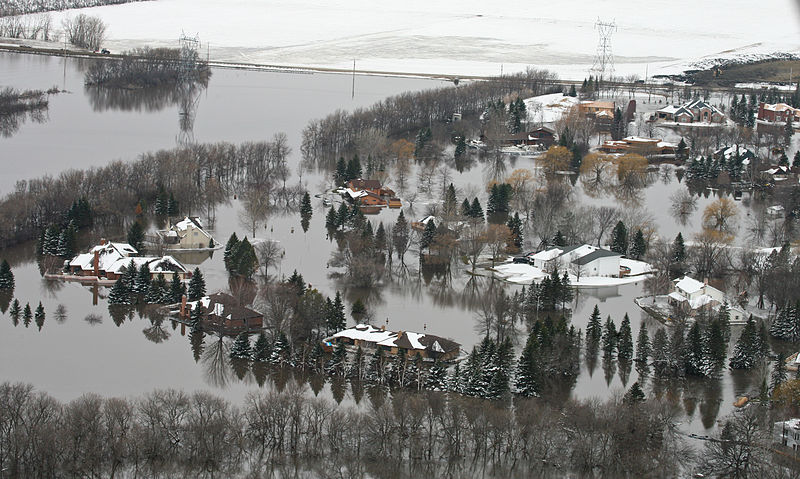Flooding, storms, and other hazardous conditions cost billons of dollars in damages annually across the United States. Hazard mitigation programs attempt to break the cycle of repeated disaster damage by identifying and addressing a community’s disaster vulnerabilities in anticipation of future events. One such hazard mitigation solution is the voluntary acquisition of flood-damaged properties from their owners, using the federal hazard mitigation grant program and other state and federal grant programs. The acquisition and restoration of these floodplain properties can increase community resilience while improving wildlife habitat, enhancing ecosystem services, and providing much-needed open space and recreational facilities to a community. Buyouts present an opportunity for communities to create public assets while restoring the ecological integrity of the floodplain and strengthening the community’s resilience to future disasters.
The Environmental Law Institute’s (ELI’s) and the University of North Carolina Institute for the Environment’s (UNC-IE’s) work on Natural Hazards and Opportunity: Community Resilience and Habitat Connectivity aims to help flood-prone communities fully leverage the potential ecological and community value of properties they may acquire under federal hazard mitigation and other programs that fund acquisitions of these properties.
Since 1993, FEMA’s Hazard Mitigation Grant Program has supported the acquisition by local governments of over 37,000 disaster-damaged properties. Under FEMA’s acquisition programs, once the properties are purchased, existing structures must be removed and the land must be dedicated long term to open space, recreational, or wetland management uses. Local governments typically oversee these floodplain buyouts, using funding from one or more state-administered federal grant program and matching funds provided by state and local governments. Local governments often take ownership of these sites with little or no funding for future management. Guidance on post-acquisition restoration, long-term management, and maximization of community benefits, along with plans for long-term funding, is desperately needed. Although some buyout properties have been converted to parks or restored to natural habitats, many properties remain unimproved empty lots. In such cases, there is an untapped opportunity for communities to leverage the potential habitat and community benefits of these properties.
 |
Management options for acquired properties will vary by site, depending on the location, adjacent land uses, funding available, and capacity of local governments and/or local organizations to restore and maintain the property. Perhaps most importantly, a community’s post-buyout opportunities will be determined to a large extent by the geographic “completeness” of the buyout. Individual properties acquired using a voluntary hazard mitigation grant might be scattered among occupied properties (patchwork); moderately connected with just a few remaining homes and infrastructure (holdouts); or contiguous (comprehensive).
Use options for acquired sites will involve varying degrees of intensity of management, coordination with neighbors, public planning, and development of management partnerships. For example, community gardens, pollinator habitats, pocket parks, or green infrastructure projects may be appropriate on small—or “patchwork”—sites. For larger sites (holdout and comprehensive buyout scenarios), there may be more potential to restore larger-scale habitat areas. For example, in Montevideo, Minnesota, the community restored 26 acres of native prairie grass on floodplain acquisition parcels. The restored area wraps around and through the properties of several remaining homes. The acquired parcels were incorporated into the Lowland Prairie Project, a project in which native prairie grasses have been seeded. This project aims to promote wildlife and provide the benefits of open space. Prairie grasses successfully reclaimed the land acquired in floodplain buyouts for the first time in 2015.
These larger sites also present opportunities for the development of other community amenities, such as parks and community gathering spaces. For example, in Rocky Mount, North Carolina, parcels acquired with buyout funds following the flood of 1999 were turned over to the Parks and Recreation Department. In 2003, the Tar River Trail, a public greenway, opened for use by cyclists and pedestrians. By 2004, the Farmington Disc Golf Course was completed. It was followed by another disc golf course at Sunset Park in 2007. Within the last two years, a dog park, barbecuing park, and a community garden also have been established in the land purchased by the city.
ELI and UNC-IE have examined approaches and best practices for leveraging floodplain acquisition programs for community and environmental benefits (see our detailed case studies of 13 communities participating in floodplain acquisition programs). Further details about ELI’s and UNC-IE’s Natural Hazards and Opportunity: Community Resilience and Habitat Connectivity project can be found on our website.
